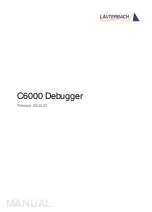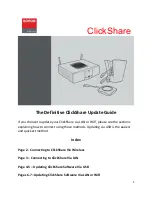
7.4 Annually
Remove dust from the battery. Test all connections (sockets,
cables and contacts). The insulation resistance of the truck
and the battery must be checked by an electrical specialist
in accordance with EN 1175-1 at least once per year. Tests on
the insulation resistance of the battery must be conducted
in accordance with EN 1987-1. The minimum insulation
resistance must be 50Ω per Volt of nominal voltage and the
minimum battery resistance must not be below 1kΩ regardless
of voltage (ref. EN 62485-3 standard).
The integrity of crates should also be monitored to ensure that
lifting equipment has not caused any damage. Any lifting hole
present on the tray must be checked for potential damage. No
sign of any deformation should be visible.
8. Care of the battery
The battery should always be kept clean and dry to prevent
tracking currents. Cleaning must be done in accordance with
the ZVEI code of practice “The Cleaning of Vehicle Traction
batteries”. Any liquid in the battery tray must be extracted
and disposed of in the correct manner. Damage to the
insulation of the tray should be repaired after cleaning, to
ensure that the insulation value complies with EN 62485-3
and to prevent tray corrosion.
Should it be necessary to remove cells, please contact EnerSys
service.
9. Storage
Batteries are dispatched from the manufacturer in a fully
charged condition. The state of charge will decrease with the
storage time. Due to parasitic chemical reactions all batteries
lose their stored energy when allowed to stand on open circuit.
The rate of self-discharge is non-linear and increases with
decreasing state of charge. High temperatures greatly reduce
storage life as they increase the rate of self-discharge. If the
truck/vehicle is not going to be used for periods in excess of
48 hours, the ignition key must be removed and any auxiliary
equipment (such as lights, beacons, on-board computer, etc)
must be switched off.
The standard storage time for a battery not installed on a truck
is one month without the need to recharge. The maximum
storage time is 6 months at 20°C provided the battery is fully
charged when put into storage and that other equipment that
could cause the battery to discharge is disconnected. It is
advisable to conduct an inspection and open circuit voltage
check after three months and implement a refresh charge if
necessary.
10. Faults
If faults are found on the battery or the charger,
EnerSys service should be called in without delay.
The measurements taken in point 7.3 will facilitate fault finding
and their correction. A service contract with EnerSys will make
it easier to detect and correct faults and ensure the battery
performs at its best.
Back to the manufacturer!
Batteries with this sign must be recycled.
Batteries which are not returned for the recycling process must be disposed of as hazardous waste!
Pb
© 2022 EnerSys. All rights reserved. Trademarks and logos are the property of EnerSys and its affiliates unless otherwise noted.
Subject to revisions without prior notice. E.&O.E.
EMEA-EN-IU-NEX-ATEX-0222






















